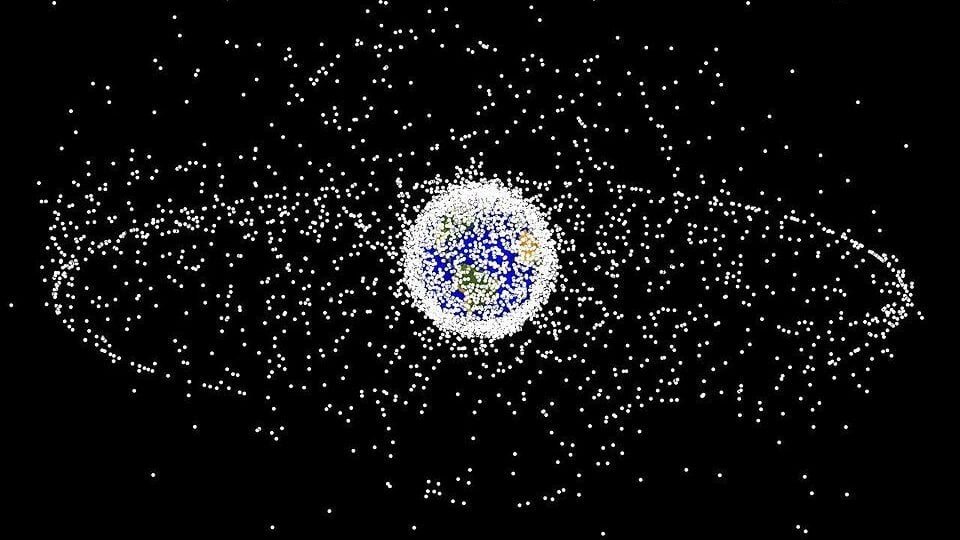
The orbital population of active satellites and dangerous debris continues to grow by leaps and bounds. (NASA)
AMOS 2023 — The Defense Department plans to start transferring its extremely precise data about the whereabouts of satellites and dangerous space debris to the Department of Commerce (DoC) next year to help underpin the latter’s effort to establish a space traffic advisory service, according to a senior Space Force official.
“We are working to get the high-accuracy catalog released to the DoC, machine-to-machine starting in the spring of next year, every four hours, indefinitely. So, they will have everything they need in order to be seeded for spaceflight safety, which they then can augment with commercial data,” Barbara Golf, senior advisor on space domain awareness to Space Systems Command, said during a Thursday panel discussion at the annual Advanced Maui Optical and Space Surveillance Technologies (AMOS) Conference.
As a result of the 2018 White House Space Policy Directive-3, DoC has been working to relieve DoD of the burden for monitoring the ever-more crowded heavens and providing warnings to non-military space operators about potential on-orbit collisions. Initially, however, the DoC’s Office of Space Commerce will rely heavily on space object tracking data from Space Force’s Space Surveillance Network of ground- and space-based radar and telescopes.
The Space Force and US Space Command keep two separate catalogs of space object data that the 18th Space Defense Squadron uses to calculate the trajectories of space objects over time to predict the probability of an in-space smash up. One is public and made available through the website Space-Track.org, and the other is the high-accuracy database only shared with allies and partners who have signed formal agreements with SPACECOM. (While detecting objects in orbit is relatively straight forward, predicting future positions is harder, and keeping tabs on maneuverable spacecraft is harder still.)
From the get-go, a central issue has been what data will be shared with DoC and what, if any, constraints the Pentagon would put on its use by the new civil service, called Traffic Coordination System for Space, or TraCSS for short. The two sides have signed a memorandum of agreement about cooperation; that document does not include the devilish details about how the will be able to leap over classification hurdles.
Richard DalBello, the head of Office of Space Commerce, told the same AMOS panel that easing secrecy concerns within DoD and the Intelligence Community that would reveal military and spy satellites is likely to be a gradual process.
“We have a very similar situation to that we had with commercial remote sensing, where it’s easy to look at commercial remote sensing and say, ‘Oh, my God, all these commercial people are going to see all this important stuff — ship movements, troop preparation — that raises concerns for me.’ Then, the question is, how do we deal with that concern?” he said.
“I think in the space environment, we’re seeing the same reaction initially, which is, when the skies are clear, adversaries could potentially have a lot more information than we would be comfortable with them having. And I think what we’ll see is the same arc, where we identify issues, discuss them, have a dialogue with industry, if necessary, put in place certain restrictions, but overall the trend will be towards openness. It will be a trend towards openness for the same reason it was in remote sensing, because we don’t control the world that there are a lot of actors out there,” DalBello explained.
Golf, however, insisted that DoD at the top levels has no interest in restricting the future TraCCS system.
“Commercial data, commercial processing is not classified,” she said. “It does not matter that the DoD wishes it were. We’re over it… So, we’re gonna get you what you need for spaceflight safety … and antiquated legacy policies that are tied to restricting capabilities that are over 50 years old are irrelevant.”
As for acquiring commercial data, DalBello told Breaking Defense that his office “will be spending almost $59 million in commercial acquisitions” in fiscal 2024. Of that “about $17 million” will go into “commercial infrastructure setup” and “over $36 million [into] commercial space situational awareness data, services, and pathfinders to integrate new services as TraCSS matures.”






















